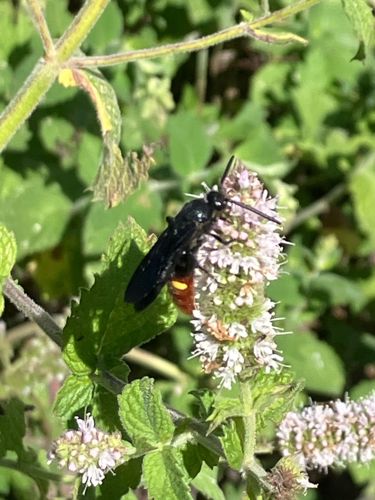Scoliid Wasp
Scientific Name: Likely Scolia dubia (Two-spotted Scoliid Wasp) or another species within the Scoliidae family. Positive identification to species level from the image alone is difficult without clearer distinguishing features.
Order & Family: Order: Hymenoptera, Family: Scoliidae
Size: Typically large wasps, ranging from 15 mm to 30 mm (0.6 to 1.2 inches) in length, depending on the species.

Natural Habitat
Found in various habitats where their host insects (scarab beetle larvae) are present, including gardens, agricultural fields, woodlands, and grasslands. They are often seen in areas with flowering plants.
Diet & Feeding
Adult Scoliid wasps feed on nectar and pollen from various flowers. Their larvae are parasitoids of scarab beetle larvae and other soil-dwelling insect larvae.
Behavior Patterns
Adults are often seen foraging on flowers for nectar, particularly those with shallow or open corollas. Females are parasitic, typically laying their eggs on or within the larvae of other insects, often scarab beetles or other ground-dwelling larvae. The parasitic larvae develop inside the host.
Risks & Benefits
Scoliid wasps are generally considered beneficial insects as their larvae parasitize and control populations of soil-dwelling pests like scarab beetle larvae (grubs) that can damage plant roots. They are not aggressive towards humans and typically only sting if handled roughly or trapped, and their sting is not usually severe. They also contribute to pollination as adults feed on nectar.
Identified on: 8/22/2025